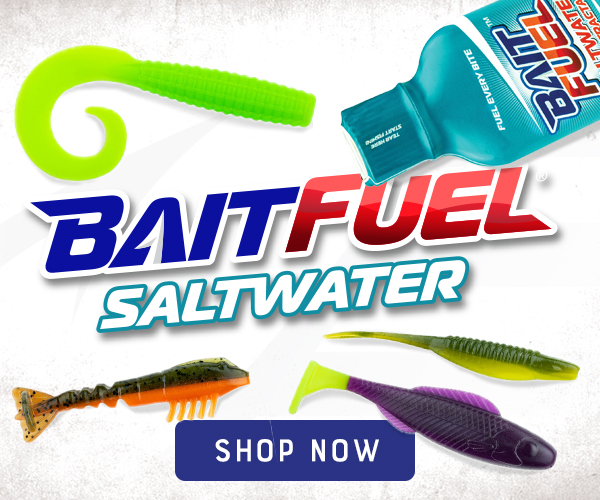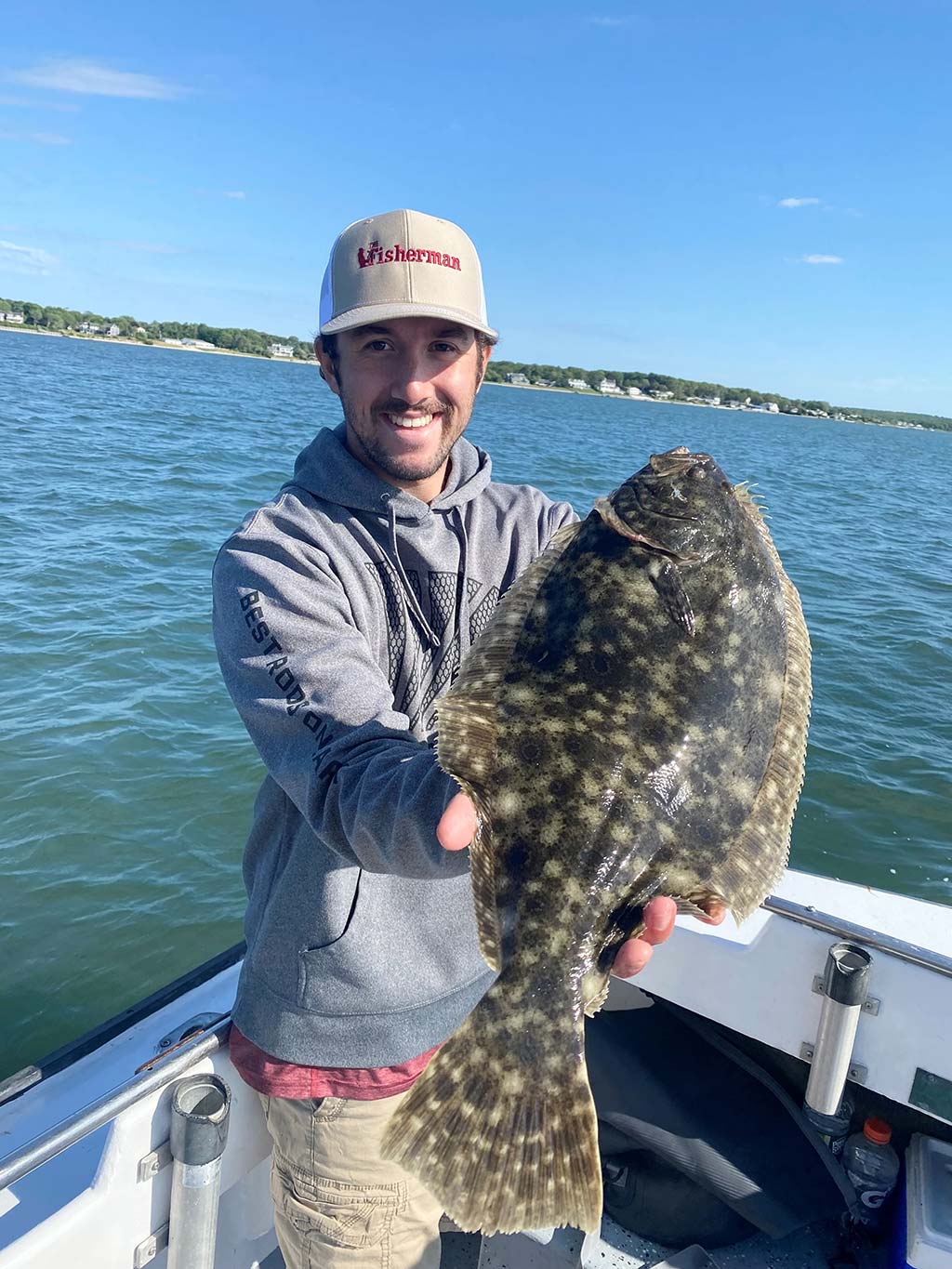
Shinnecock Bay is the ideal stage for targeting skinny water fluke.
The idea of light-tackle shallow water fluke fishing appeals to many. While Long Island has several locations where it can be done, Shinnecock Bay certainly rates near the top of the list. The eastern and western portions of the bay are separated by the Ponquogue Bridge, and both areas, and the bridge itself, are well suited to the light tackle approach. The bay does get quite deep in some areas but we’ll define skinny water fluking as targeting depths of roughly 3 to 8 feet. Sometimes in the real thin stuff, you can watch fluke take your offering thanks to the crystal clear water in the bay. This adds another dimension to fluking that makes fishing the shallows so appealing.
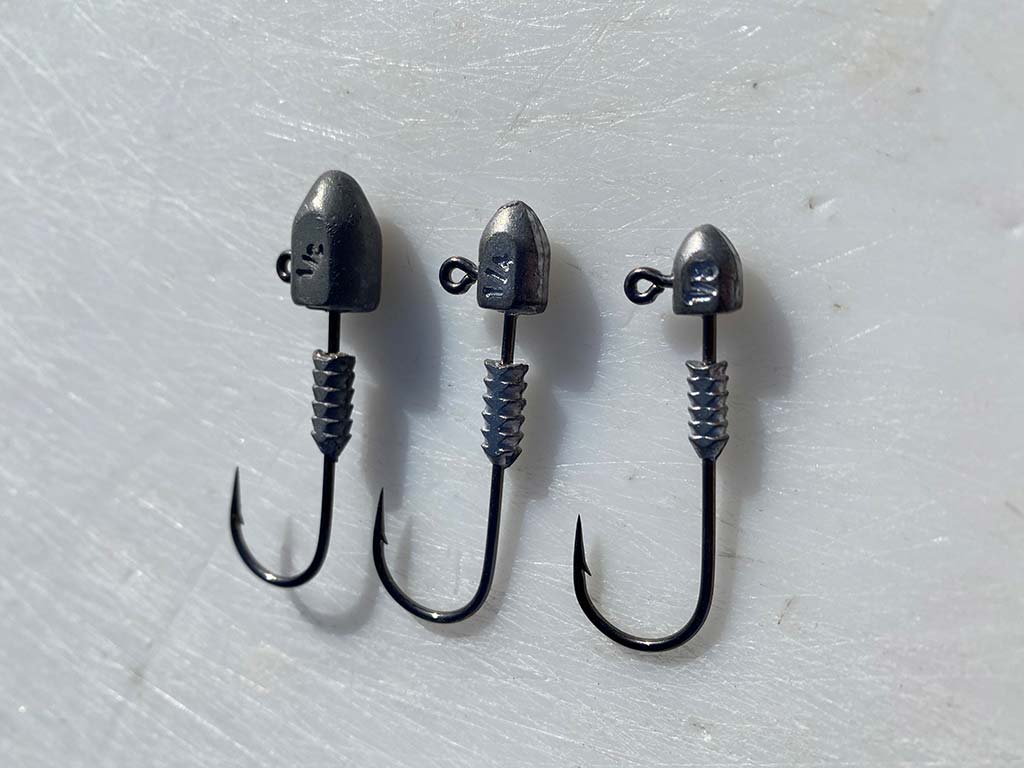
Light Is Right
When fishing extremely shallow water it is critical that you use the proper tackle. A light 6- or 7-foot rod that can handle 1/8- to 1-ounce payloads is key. Rods typically used for freshwater trout and bass are ideally suited for this fishing, and yes, I said 1/8 ounce. Don’t be afraid to go this light if you can maintain contact with the bottom. Use the lightest possible weight that still allows you to maintain bottom contact. To some, this may seem tough to do, but a trick to assist you in getting these weights down is using the right line and leader.
My personal choice is 10-pound Power Pro braid with a leader of 15- to 20-pound Seaguar Inshore fluorocarbon. A Uni-to-Uni knot joins the two lines together. Don’t shy away from the lighter lines. With a properly set drag you can land any fluke in the bay with this combo. In fact, I’ve landed bass over 40 pounds using 10-pound braid so even a double digit fluke is no problem provided your drag is smooth and your line connections are in order. The only thing I do suggest is checking the leader from time to time for nicks and cuts—if you find anything at all, replace it immediately. Using Hi-Vis line like yellow or chartreuse allows you to watch the line, which is another key in light tackle fishing. The moment your jig hits the bottom your line will ‘bow out’ indicating your jig is where it should be. With a visible line you can do this easily. Once the jig does hit, I will typically let out a few extra yards to account for the drift angle.
Some sharpies will fish with the bail open and the pointer finger holding the line to the foregrip. This offers two advantages while fluke fishing with light jigs. The first one is that as a drift picks up speed, you can easily let out more line to remain on the bottom by removing your finger and then picking up your line again. Remember that being on or close to the bottom is important so being able to let out line quickly on the drop-offs is key. The other advantage to this is hooking fluke. At times, a fluke will just put its weight on a jig. An immediate hookset will pull the hook from the fish. Dropping the jig or bait back for a few seconds before setting the hook will give the fish enough time to eat. This technique takes some getting used to but I highly recommend it. Once I incorporated it into my plan of attack, my hookup ratio increased dramatically.
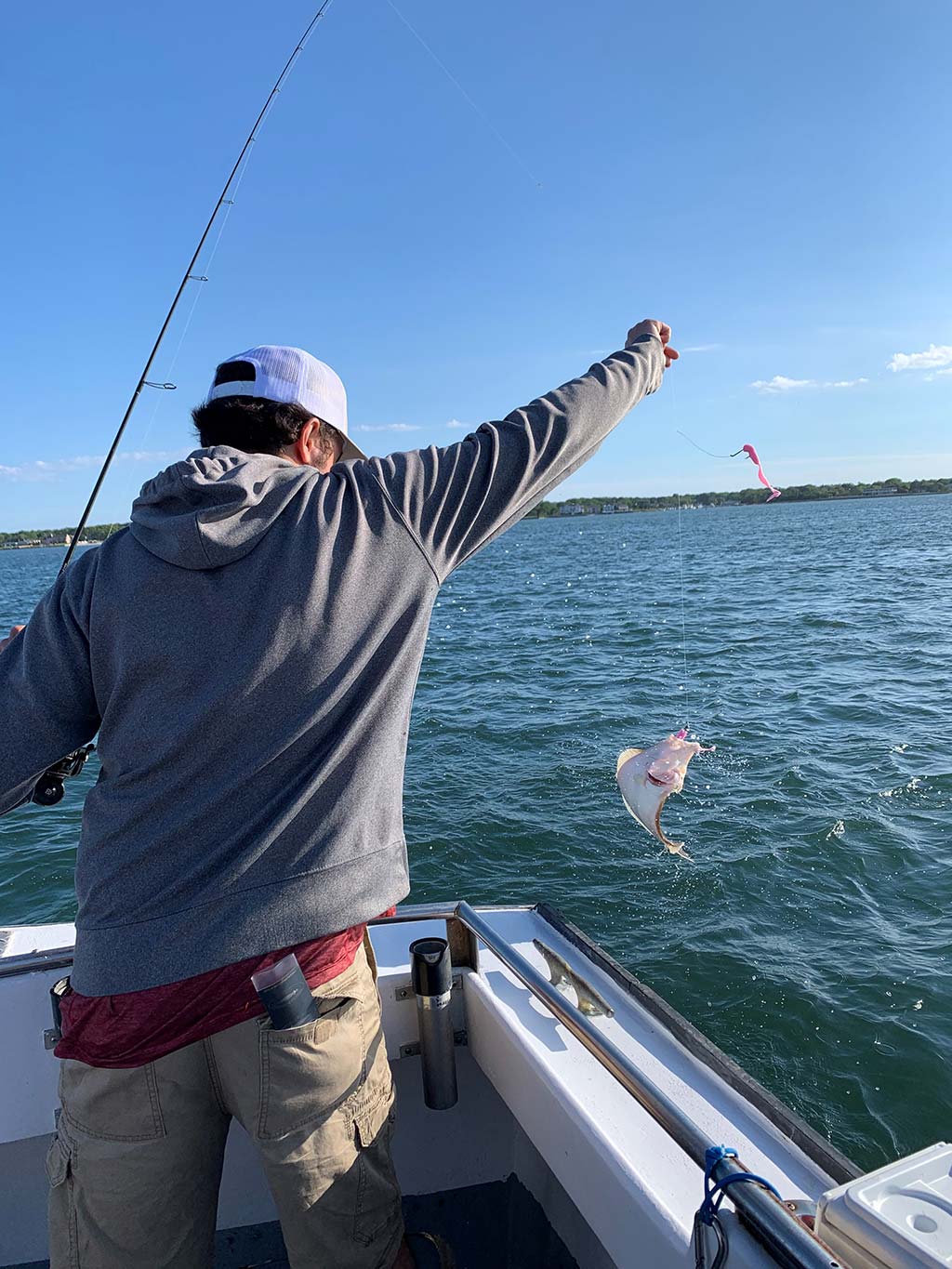
Plastic Or Bait
When I first told my father several years back that we would be targeting fluke in the bay with just soft plastics, he thought I was crazy. He spoke of the days when the killie was king and to catch fluke you needed them. Well in recent times finding killies isn’t the easiest thing to do so he settled for squid and spearing which he still was convinced would outfish my bait. I guess you know where this is headed. By the end of the trip let’s just say he was a firm believer in soft baits for fluke and dipped into my stash for some of the magic. While on that particular trip the lone plastic out fished the bait, there have been times when bait did outfish the plastic.
Nowadays I’ll have my Gulp! and Fishbites but I’ll also carry that bag of prime spearing with me. As for squid, it works, but in the bay when trying to stay light, I feel as if the long squid strip creates too much drag on the jig and compromises the concept of going lighter. Keep in mind when selecting spearing to pick properly packaged specimens. A quick visual inspection should give away the quality of the bait. When it comes to deciding between local and Canadian spearing I spoke to Deena Lippman, first mate on the Shinnecock Star. She said “The fish have no preference. If they’re hungry they will eat” Again she reminded me the only thing to look out for is if they’re packaged properly. A product that is taken care of before freezing will stay on the hook better and the bellies will remain intact.
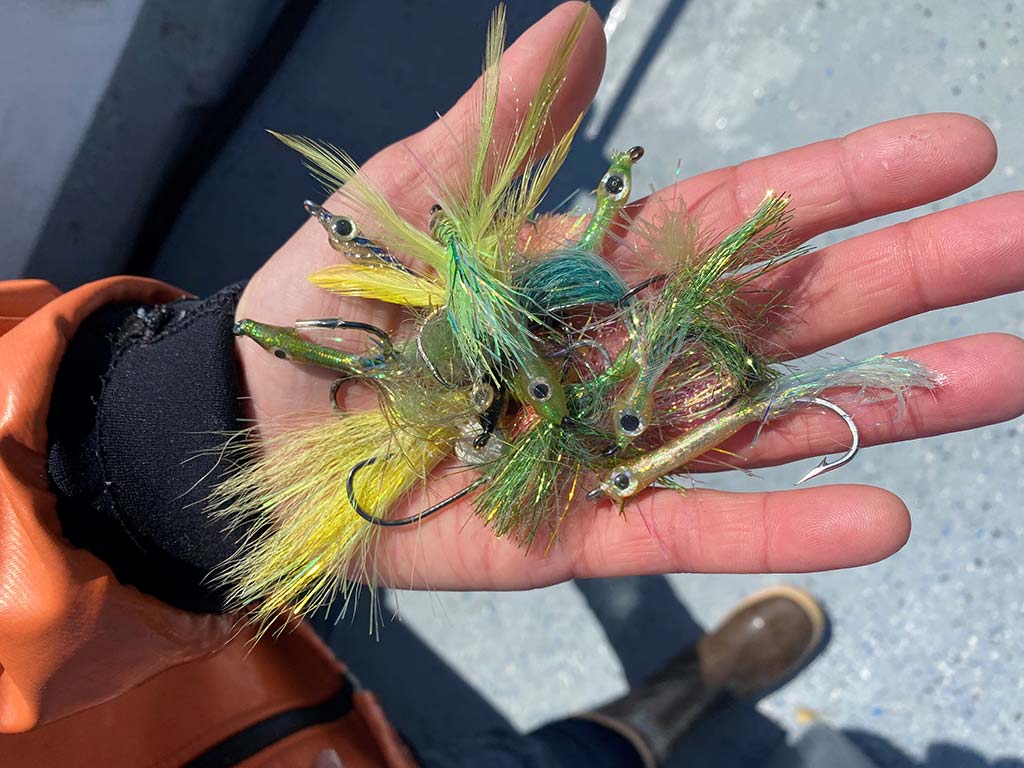
Highs & Lows
When out fishing, we all have our highs and our lows but if you choose to implement a hi-lo rig into fluking, you will increase your catch and most of your days will be highs. Fluke can absolutely be caught using a single jig on a leader. As a matter of fact, I’ve caught plenty of fish using a single jig but add a teaser hook and that catch rate goes up quite a bit. Jigs in the box should range from 1/8 to 1 ounce as stated before. The shallows of Shinnecock will typically not call for anything more than this unless it’s a screaming moon tide or you’re not fishing shallow. Perhaps it’s having two baits in the water and fluke always looking up and seeing the teaser hook first that makes this rig so effective.
My hi-lo rig consists of a naked jig head or SPRO bucktail on the bottom attached to a quick clip for easy switching and a dropper loop about 16 inches above that. Much debate can be brought up over what to use as the dropper. A baitholder hook with a bait or a teaser can both be effective. The key is to play around with it and see what the fish like on that particular day.
You can get crazy with colors too while fluking. My advice is to stick with the three basics; white, pink and chartreuse. These colors are effective 95 percent of the time. This goes for both the bucktail jig and the teaser. Sometimes I do like to mix the colors up between the jig and teaser to see which one the fish are more keyed in on. If you fish with a friend, he should be keeping it different too until you are convinced the fish want a certain color on a certain day.
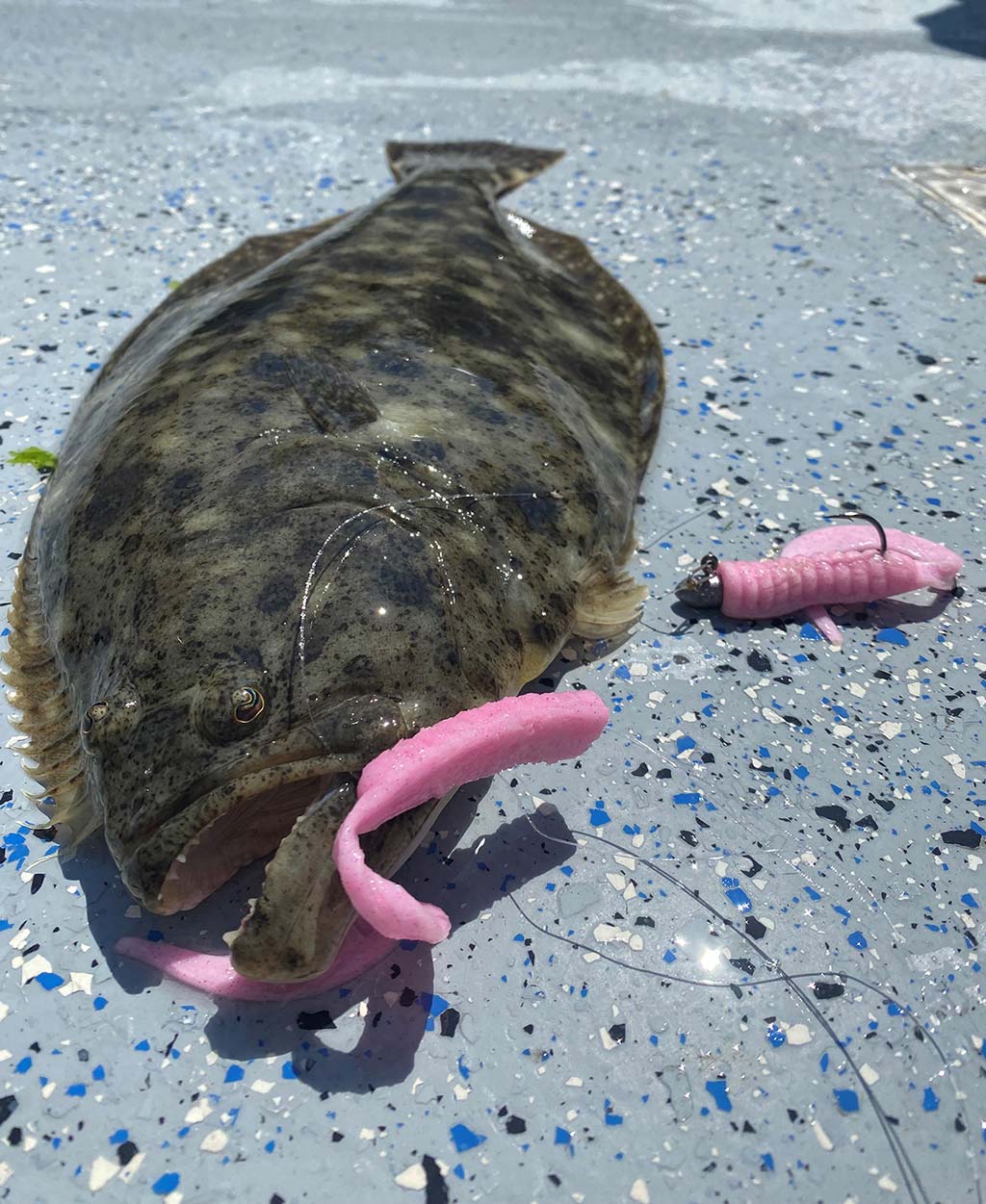
Bar Hopping
One of my favorite ways to fish the bay is to nose my boat or kayak into the numerous sandbars in Shinnecock and let the tide carry me off of them. Aside from the channels, these drop offs are prime areas where fluke will feed. This is where the bail open technique shines. As you drift away from a sandbar, the water will become deeper quite fast, meaning you must let line out to stay in touch with the bottom. Quickly letting your finger off the line will keep you in the strike zone when it counts.
Going down the bar is one way to do it but you can also drift up the bar with similar results. The only thing about this is you are limited by the draft of your boat. Shallow draft boats and kayaks can do this but anything with a deeper draft may end up high and dry. For the deeper draft boats I recommend just nosing up and drifting off to ensure you don’t get stuck. If you don’t have a boat or kayak and still wish to fish these waters, The Shinnecock Star is a wonderful boat that specializes in skinny water fluking.
